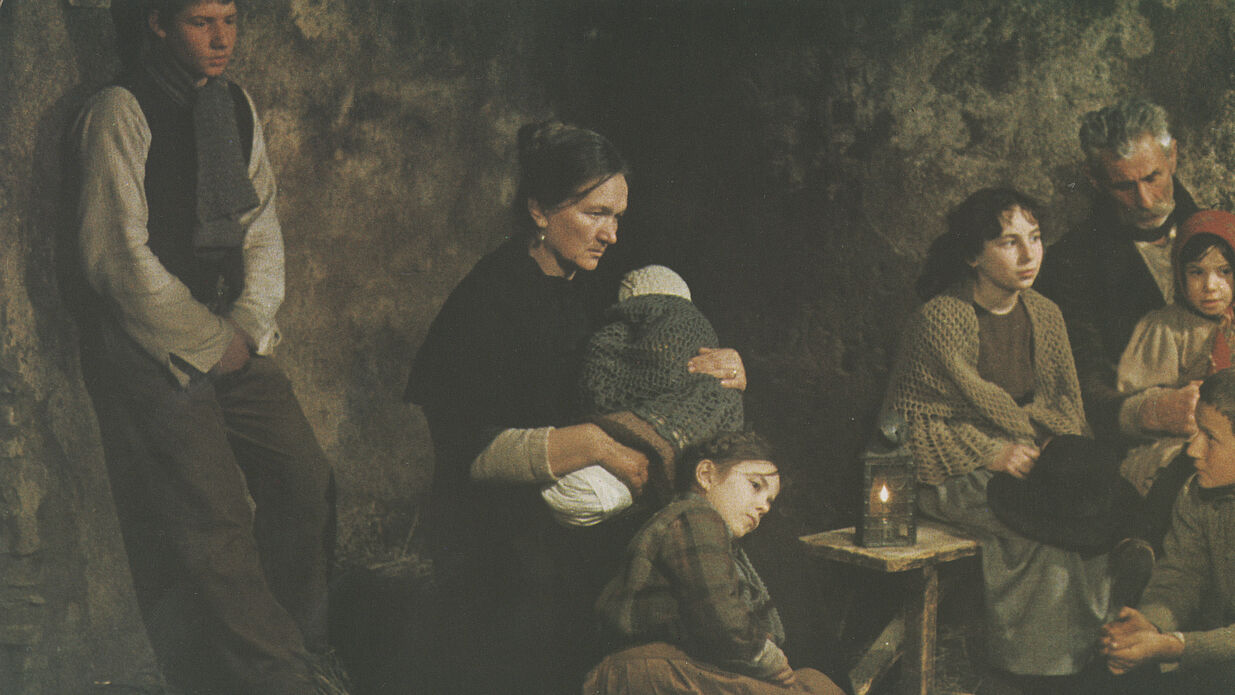Our Daily Bread

L'albero degli zoccoli (IT 1978)
The starting point of this film series on agriculture in film is the recurring close-up of an open palm on which isolated grain seeds lie. It is a seemingly simple image, but lingering with it gradually reveals the full power and fragility of our existence on and with the earth. This image unites most of the films in the retrospective, which explores peasant culture and labor along several lifelines. The films deal with historical-political outlines of agro-cultural transformations, but even more they negotiate moral principles of global living with nature and animals. After all, they are about basic conditions of our existence: food, capital and labor.
In times of necessary structural change, agriculture is once again cast in a new light. This has always been true for all major political debates. Whether from the left or the right, the earth has always been claimed by all. Film history sheds light on where agriculture comes from, what it takes, and how it has inscribed itself in the relationship between man and nature. The comparatively shorter history of cinema has accompanied agriculture since the beginning of industrialization. While some films make decided references to pre-industrial forms of agriculture, the questions are the same there as well: How to escape the unjust distribution of goods, land, and labor? How does one treat the earth with the humility it requires?
The fact that one encounters the shot of the open hand so often already points to the fact that cinema, regardless of whether it uses documentary or fictional strategies, has found some archetypal images for this relationship. These include geometric long shots of cultivated fields, close-ups of engines, and the image of flowing water or milked milk. For the most part, the films tell of conflicts between tradition and modernity. They are about the farmers' constant struggle for survival in the face of unpredictable nature and cynical politics.
At the same time, the films refuse simple narratives and allow themselves to be swept away again and again by the sensual cinema of movement. Flowering plants, running goats, and machines plowing through fields create a lyrical aesthetic all their own. This is accompanied in many films by an ethnographic interest. Since traditional agriculture was sidelined with the advent of cinema, the films have always documented and thus captured disappearing activities, customs, remote places, or folk songs. The films are also witnesses to a world that no longer exists.
Just like the tilling of the earth, cinema is able to inscribe itself into the landscape. As a temporal medium, it is better suited than any other to register the cyclical processes of nature and to enable a simultaneity of past, present and future that is so important for the people who live from agriculture. It is not without reason that countless children appear in this film series. They too are a seed in the palm of their hand. The grains trickle through their fingers. The question is whether they will still grow when they fall to the ground. (ph)
The film series has been curated by Patrick Holzapfel.